The measurement system variation is also known as a measurement system error. The measurement variation represents the amount of measurement error.
Measurement system variation or errors are classified into 5 categories:
- Repeatability(Equipment Variation)
- Reproducibility(Appraiser Variation)
- Bias
- Stability or Drift
- Linearity
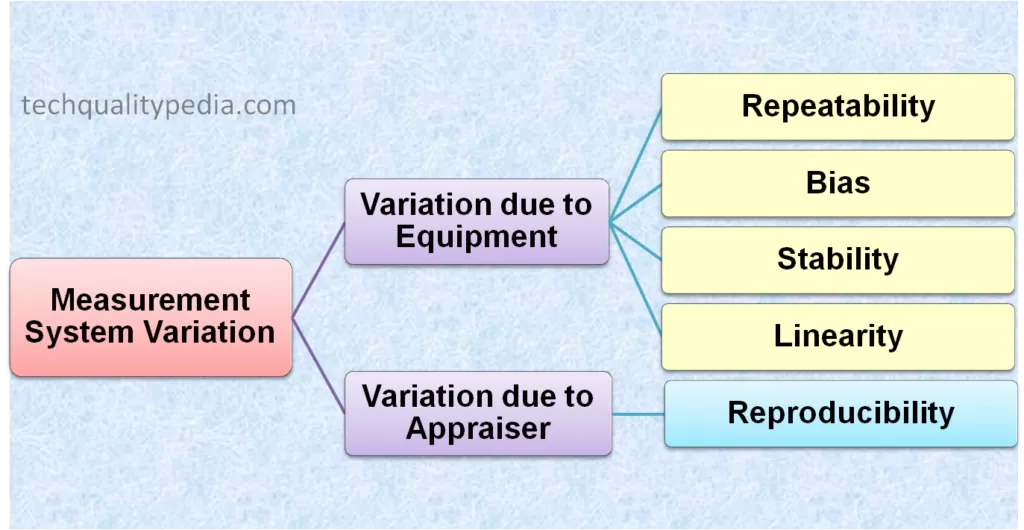
Table of Contents
Measurement system variation | Focus
Measurement system variations mainly focus on two important factors – Repeatability and Reproducibility.
Repeatability– variation due to equipment.
Reproducibility– variation due to appraiser (operator or inspector).
In MSA and calibration process, repeatability and reproducibility variation comes under precision error while bias, stability, and linearity often referred to as accuracy error.
There are various quality improvement tools and techniques like SPC, 7 QC tools, MSA, and Six Sigma are used in manufacturing industries to analyze and control the product or process variability and measurement system variation to improve the product and process quality.
Measurement system variation due to equipment
Measurement system variation or errors due to equipment only are classified into four categories:
- Repeatability
- Bias
- Stability or Drift
- Linearity
In measurement system analysis, a Gage R&R study is performed for evaluating repeatability and reproducibility variation.
Repeatability definition | Repeatability meaning
Repeatability is defined as the variation in observations/measurements obtained with one measuring equipment/gage when used several times by one inspector/assessor while measuring the same characteristics on the same/identical part.
In short, it is defined as
- Variation in measurements
- Obtained with one instrument
- Used several times
- By one appraiser
- Identical characteristic
- On the same part
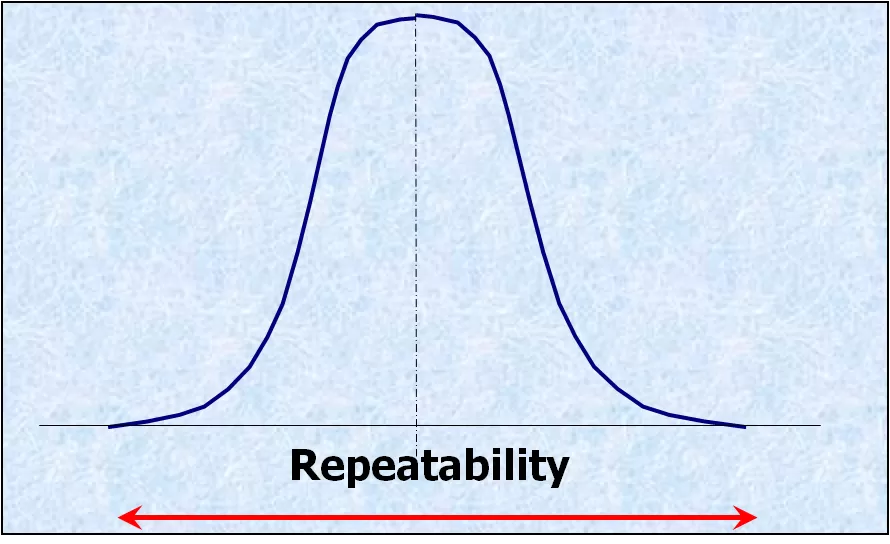
Repeatability is usually mentioned as equipment variation(EV) and within system variation.
Repeatability formula based on tolerance:
Repeatability= (EV/Tolerance) x 100%
Reproducibility definition | Reproducibility meaning
Reproducibility is defined as the variation in the average of observations/measurements made by different inspectors/assessors using the same measuring equipment/gage when measuring the same characteristic on the same/identical part.
In short, it is defined as
- Variation in the average of measurements
- By different appraisers
- Using the same instrument
- Identical characteristic
- On the same part
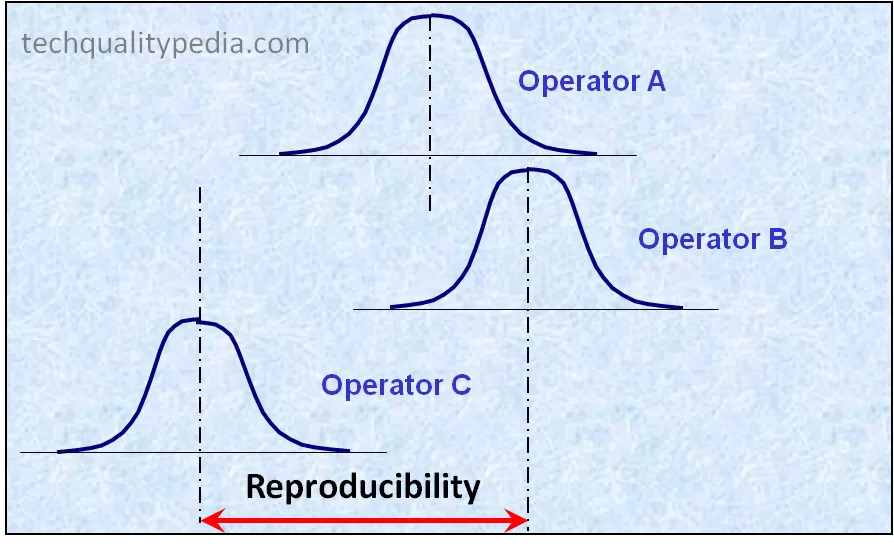
Reproducibility is usually mentioned as Appraiser Variation(AV) and Between system variation
Reproducibility formula based on tolerance:
Reproducibility= (AV/Tolerance) x 100%
Bias definition | Bias meaning
Bias is the difference between the observed average value and the true or reference value on the same characteristic on the same/identical part.
Bias often referred as ‘Accuracy’
Bias: Observed Average – Reference Value
% Bias : Bias/ P.V (or tolerance ) x 100

CAUSES OF EXCESSIVE BIAS :
- Instrument needs calibration/repair
- Use of worn instrument
- Worn or damaged master
- Distortion of gage or part
- Unskilled Appraiser/Operator/Inspector
- Measuring/observation error
Stability definition | Stability meaning
Stability is the change of bias over a period of time.
Stability is the total variation in the observations/measurements obtained with a measurement system on the same master/parts when measuring a single characteristic over an extended time period.
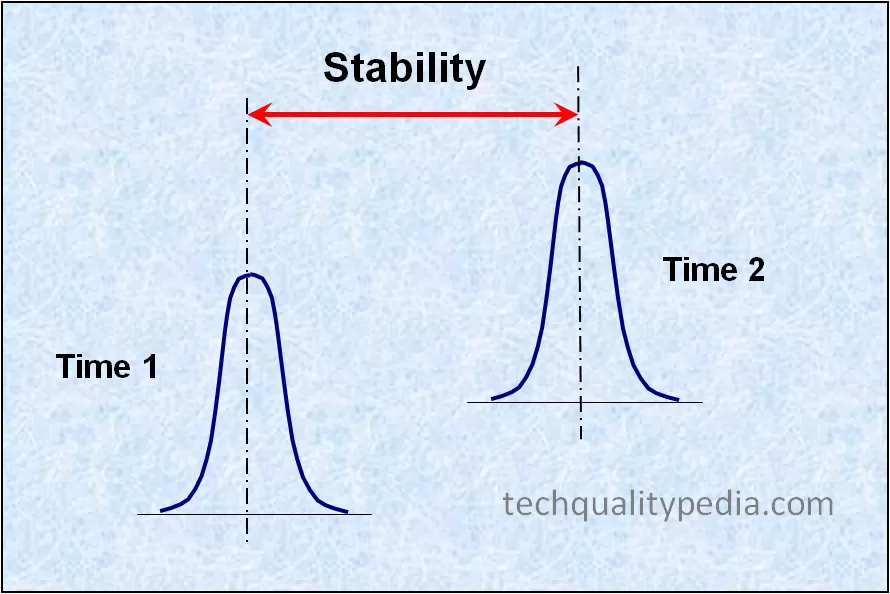
Stability also known as Drift.
In short, it is defined as:
- Total variation in measurements
- On same master or parts
- Measuring single characteristic
- Over extended time period
Linearity definition | Linearity meaning
Linearity is defined as the difference in the bias values thru the expected operating range of the instrument.

Linearity measurement
- Select at least 5 parts for linearity measurement.
- Select the one appraiser for parts measurement.
- Measure each part against reference/master value at a different operating range of equipment/instrument. e.g. if you have vernier caliper of 200mm range, then you have to cover the entire range i.e. measure the part at 10mm, 20mm, 30mm, 40mm……and continue up to 200mm to find the variation.
- Obtain a minimum of 10 repeated readings on each part.
- Calculate the part’s bias and put bias calculation into the order of lowest to highest reference.
- Draw a scatter plot graph against the master/ref. values.
- Plot the bias (avg. of measured values against the master/ref. value) for each sample and draw a line. If the line formed is a straight line at a 45-degree slope, then we can say that the device is linear. If do not form a straight line or diverges a 45-degree slope, then there may have an issue with equipment/linearity.
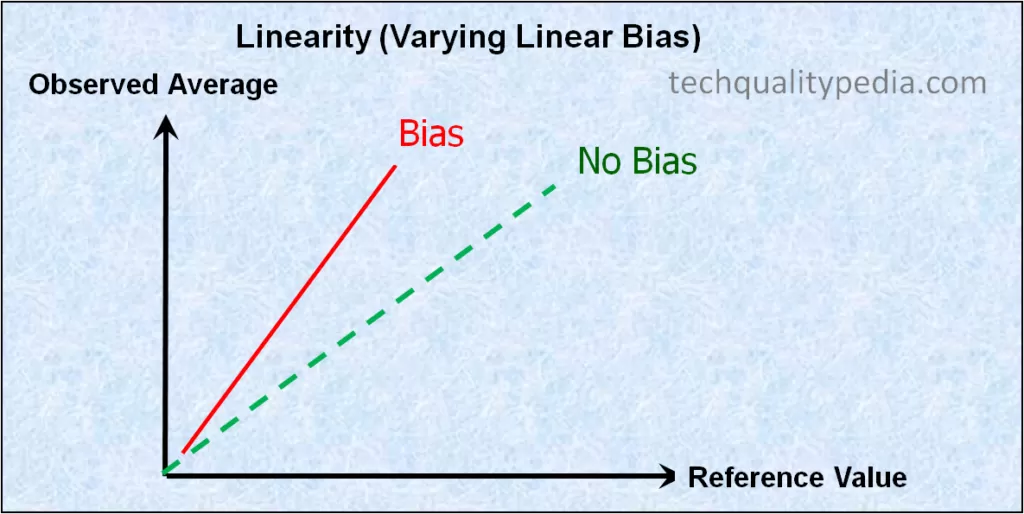
Related articles


